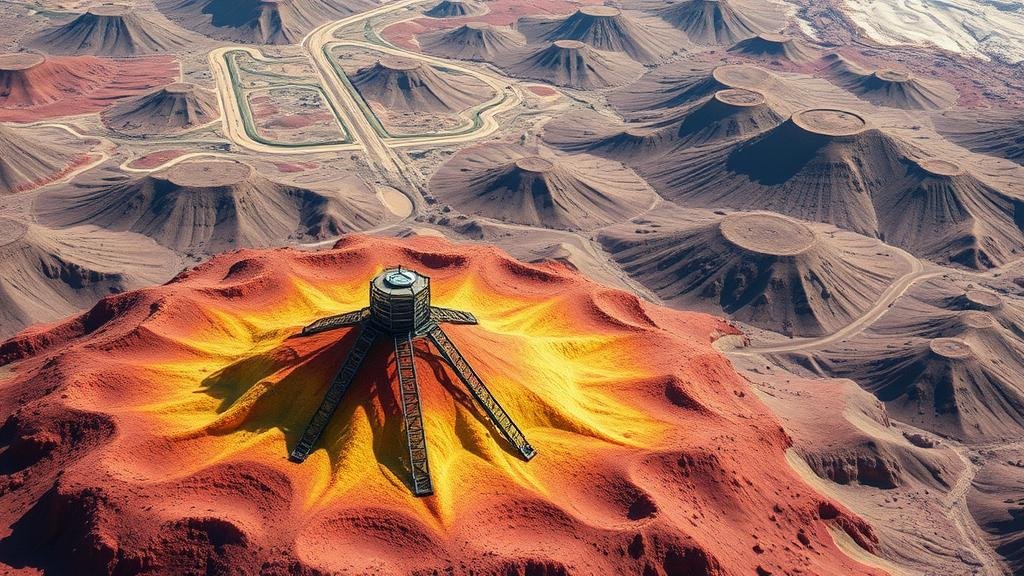Techniques for Detecting Subtle Geophysical Anomalies Linked to Ore
Techniques for Detecting Subtle Geophysical Anomalies Linked to Ore
The exploration of mineral resources heavily relies on the accurate detection of geophysical anomalies that may indicate the presence of ore deposits. As the demand for minerals continues to rise, so does the need for advanced exploration techniques that can detect these subtle geophysical signals. This article discusses various techniques employed in the detection of geophysical anomalies, breaking down the principles behind each method and providing relevant examples.
Understanding Geophysical Anomalies
Geophysical anomalies refer to variations in the physical properties of the Earths crust, which may indicate the presence of valuable minerals. e anomalies can be subtle, often requiring sophisticated techniques for detection. Common types of anomalies include magnetic, gravitational, and electrical signals that deviate from established norms.
Magnetic Surveys
Magnetic surveys are one of the oldest and most widely used methods for detecting mineral deposits. The Earths magnetic field is affected by the presence of ferromagnetic minerals like magnetite. By measuring variations in magnetic intensity, geophysicists can identify potential ore-bearing areas.
- Application Example: The Sudbury Basin in Canada has been extensively surveyed using magnetic methods to locate nickel and copper deposits. The magnetic gradient maps revealed anomalies correlating with known ore bodies, guiding further drilling operations.
Gravimetric Surveys
Gravimetric surveys measure variations in the Earths gravitational field. These variations can indicate the presence of denser or less dense materials below the surface, such as ore bodies. This method is especially valuable for locating sedimentary basins containing hydrocarbons and mineral deposits.
- Application Example: In the search for gold deposits in Nevada, gravimetric data helped in identifying subsurface structures indicative of mineralization. Significant anomalies led exploration teams to successfully drill into previously unmapped ore-bearing zones.
Electromagnetic Surveys
Electromagnetic (EM) surveys utilize the conductivity differences in the ground materials to detect ore deposits. These surveys involve the transmission of electromagnetic fields into the ground and measuring the response. Conductive materials often associated with mineralization produce measurable signals that can be analyzed.
- Application Example: The discovery of the Voiseys Bay nickel deposit in Newfoundland and Labrador was aided by an airborne EM survey, which highlighted conductive anomalies linked to massive nickel-copper-cobalt sulfide mineralization.
Seismic Surveys
Seismic surveys involve sending shock waves into the ground and analyzing the reflected waves to determine subsurface structures. This technique is particularly useful for mapping geological formations and identifying potential ore hosts.
- Application Example: In the oil and gas sector, seismic surveys have been effectively used to delineate reservoirs and in the mining industry to explore for precious and base metals, leading to successful extraction operations.
Integrated Geophysical Methods
Often, the best results in detecting geophysical anomalies come from using a combination of methods. Integrated geophysical studies leverage the strengths of magnetic, gravity, electromagnetic, and seismic techniques, leading to more reliable interpretations of the subsurface.
- Application Example: The integration of gravity and magnetic data in the Pilbara region of Australia successfully identified new iron ore deposits, increasing the efficiency of mineral exploration in the area.
Challenges and Considerations
While advanced geophysical techniques enhance detection capabilities, they are not without challenges. Common issues include data interpretation complexities, geological noise, and the cost of conducting comprehensive surveys. Addressing these challenges requires skilled geophysicists and ongoing advancements in technology.
Conclusion
The detection of subtle geophysical anomalies linked to ore deposits is a critical aspect of mineral resource exploration. By employing various geophysical survey techniques, exploration teams can improve their chances of locating valuable mineral resources. integration of different methods not only enhances detection accuracy but also provides a comprehensive understanding of subsurface geology.
As technology advances, the field of geophysical exploration is set to become even more sophisticated, enabling better resource management and minimizing environmental impacts associated with mining. By continuously refining these techniques, the industry can meet the growing demands for minerals efficiently and sustainably.



